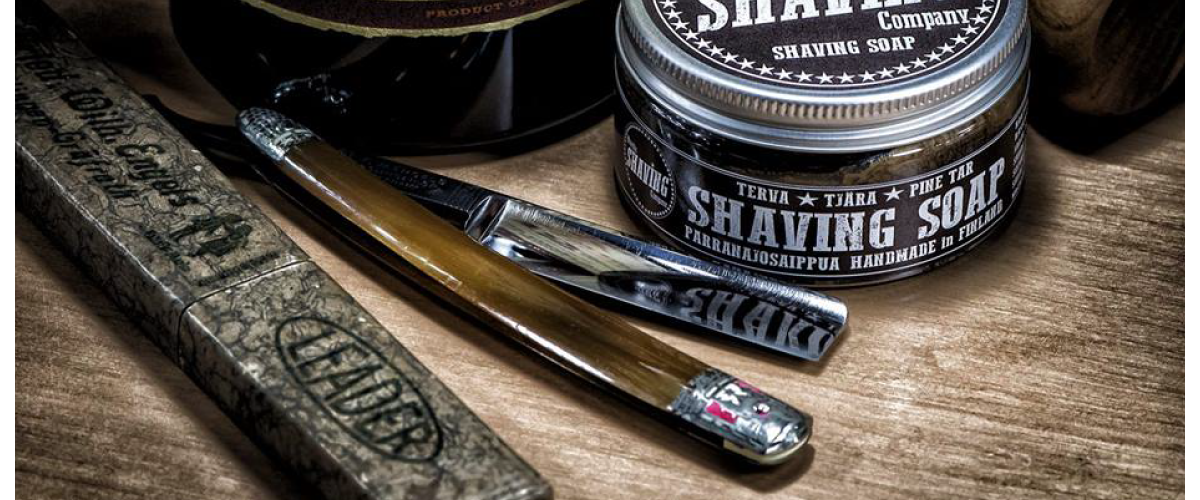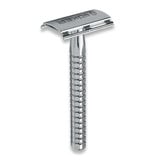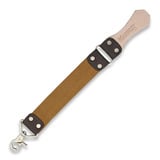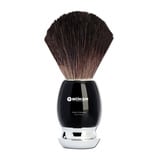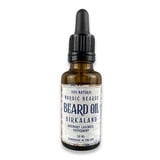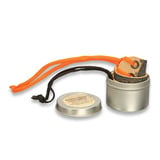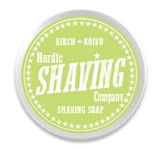Shaving with traditional equipment
Shaving is an everyday routine that is an integral part of the morning rituals of most men, even several times every week. In modern times, shaving one's beard is quite easy and safe; the electric razor is a modern tool for shaving, but the operation, quick in nature, does not compare to the traditional techniques and shaving tools. The traditional shave with a straight razor, shavette or a safety razor, for example, consumes more time than an operation with a machine, but it is well worth the trouble. At the same time, you will not need to shave as often.
Different razors have been used since the dawn of time, and in many cultures, shaving has even been a high-class test of loyalty. When the member of a higher social class has been momentarily put into a position of submission with a humble servant making a blade dance on his neck so that a poorly timed movement can be fatal, it has been of utmost importance that the shaver has neither shaking hands nor a single revolutionary thought.
In this article we'll shortly introduce different straight razors, safety razors and other shaving equipment and also the relevant skin and beard care products.
Preparation for shaving
It's important to always remember the preparation. Shaving is always performed as wet shaving, because dry shaving irritates the skin needlessly and causes inflamed hair follicles or even cuts.
The most important element is water.
You'll just need a shaving brush and some shaving soap, and, of course, the shaving tool of your choice.
Firstly, you should place the shaving brush in tap water for soaking, hot enough but not too hot in order to avoid burns. Many men prefer to shave after a shower, because warm water in particular softens the beard and opens up the pores. It's also a good time to shave after coming from the sauna.
The next thing we will introduce to the operation is the pre-shave oil or cream. Massage the product onto the area you intend to shave. Then you will take the shaving brush from the water and shake the excess water off. Load the brush with soap by swirling it 20-30 sec on the soap and then lather in a bowl or face for about a minute. Utilize a bowl or spread the soap straight onto the skin. Whip the froth to prepare it for use and spread it on the areas to be shaved with a back-and-forth motion.
The preparations have now been completed and the actual shaving can begin.
Tips for a successful shave
Nobody's born a master. Especially the first few times with new equipment can feel challenging, if not even scary. The skill will develop with repetition, though, and you will eventually gain experience and master the art. Before you even notice the development, the straight razor or the safety razor will be a part of a routine for you. The most important things are to be careful, to keep the tool sharp and remember skin care before and after the shave. You shouldn't press the shaving tool against yourself too much. You should also shave with short movements. The right technique doesn't resemble actual "pulling" across the area to be shaved. Wipe the extra froth from the blade with a cloth or a towel on regular intervals.
Always start shaving in the direction of the hairs. The first time will be about cutting the longest hairs, parallel to their natural direction. Operate in the direction of the hair. After that, wash your face and touch your face to get a feel of where you still need to shave. Only spread the foam on the areas where you still need to operate. Then you can move onto the precise shave. Proceed to shave in a sideways direction, not with or against "the grain" and move towards your chin. If you are not satisfied with the result, rinse your face again and lather the soap. Then you can shave towards your nose. As you gain more experience, you will be able to do the precise shave against the grain, but that isn't what we'd recommend for beginners.
When you have completed the shave, you can use the alum block. Its purpose is to care and disinfect the skin and close any possible small cuts. Finally, you should treat the shaved area with an aftershave.
Remember to wash the shaving brush carefully. Dry it with the brush side pointing downwards. If you use a straight razor, dry it very carefully with a tissue paper or cloth and then keep it away and open for at least 24 hours.
Different types of razors
Straight razors have been in use since the dawn of time and for a long time, it was the only method of shaving. Shaving with a straight razor calls for special attentiveness and mastery of the technique. While shaving with a straight razor, one should truly know what he is doing. However, once the technique has been internalized, the straight razor is a great and traditional choice.
A razor can be a mere tool, but it can also be a collectible item, and nowadays razors appear in many stylized manifestations. At the same time, of course, it's an economically sensible option.
The blades of many razors are made out of carbon steel, which means that cleaning should receive special attention. Razors with a blade of stainless steel are also widely available. Their advantage over carbon steel is better durability in the face of corrosion and discoloration. Stainless steel also stays sharp longer, but on the other hand, sharpening it is harder.
Perhaps the most stylish razors have blades of Damascus steel, with a flawless combination of visual excellence and great usability.
Razor with a fixed blade
Straight razor (cut throat razor) is a razor with a solid blade that can either be fixed or foldable.
In the foldable version the blade can be tucked inside the handle, just like with folding knives.
Even though the handle of the knife doesn't actually matter when it comes to the outcome, it's a question of preference for many users. The handles of straight razors are most often made out of plastic, wood, horn or antler, but sometimes acrylic or mother-of-pearl as well.
Razors with a removable blade
Razors with a blade that you can swap to a new one are also called shavettes or razor knives.
With the shavette, the blade is "doubled" - this is done by folding a single blade in half lengthwise. The advantages of the shavette include the ease of their use. It doesn't really need any extra care, let alone sharpening or stropping. Just change the blade when the previous one shows signs of getting dull. The changeable, effortless shavette is a great choice for the beginner; it is an easy way to test whether the traditional shaving methods are your thing.
Safety razors
The safety razor has a safety mechanism in its blade that decreases the risk of cuts and makes shaving easier. Double Edge (DE) Safety Razor, the so-called shaver, has one two-sided changeable blade. There are also models with one-sided blades, the Single Edge (SE9) Safety Razor models.
For a gentler shave, the safe Closed Comb model is great, whereas the Open Comb safety razor is better for coarse hair and a precise result. The open comb razor is especially good for more advanced fans of shaving. In this model, the blade is less retracted than in other safety razor models. This enables a highly perfectionist outcome but also demands skill from its user.
The safety razor with the closed comb is a safe method to start your shaving hobby with. It's easy to use and is not as aggressive as a tool for shaving as the model with the open comb.
An adjustable blade, however, will give you room for customization. By utilizing different angles of the blade, you'll quickly learn how to navigate every phase of the shave. Therefore you will be able to adjust the feel of the shave. Firstly, you will use the more aggressive settings to cut off all longer beard hair and then you will use a more subtle angle of attack.
Additionally, there is the so-called guillotine blade, Slant. With Slant, the edge you'll shave with is placed diagonally in relation to the rest of the tool, which ensures minimal resistance and therefore an extremely precise result. However, Slant is only recommended for experienced shaving enthusiasts.
In addition to beard hair, the safety razor is also good for other hair on the body. Many women as well have begun to favor it for shaving. The safety razor requires less intense care than the straight razor and the blade, for example, doesn't need to be changed until it gets dull. When changing the blade, you can wash the whole tool with washing-up liquid. Sometimes, even an ultrasound washer is used. Safety razors made out of stainless steel have quite long lives and are extremely durable, and at its best, a single safety razor can serve you for decades.
Shaving brushes
A proper shaving brush is one of the most important tools in shaving. It is used for frothing the foam as well as for spreading it, and you can choose your brush based on your own preferences.
For beginners, a common shaving brush made from boar hair is a great choice. The hair of this brush is coarse, but with regular use (around 30 times) the feel will get softer. Many think that the boar hair brushes do not smell very nice. However, the scent will fade over time. If you want to, you can make the scent less prominent by washing it with shampoo, for example.
Shaving brushes made from badger hair are extremely absorbent. The price determines the degree of coarseness. The softer the hair, the higher the price will usually be.
A shaving brush made out of horse mane settles in between the two aforementioned materials when it comes to coarseness.
In addition to materials from the living nature, there are brushes made out of synthetic fiber that are extremely soft and easy to take care of. You will not even need to soak the brush before a shave, just wetting it will do.
Strops and stropping
Strop, or the sharpening belt, is a mandatory piece of equipment for everyone who favors the traditional straight razor. The strop is an even, belt-like piece of leather to be used for treating the blade of the straight razor, preferably before every shave, even the very first one. Stropping in itself is quite easy. At the end of the strop, there is a loop that you can use to attach the strop to whatever fixed point you prefer and then pull the strop tight. Then you'll start to slide the knife on the surface of the strop. You'll want to do this with the spine of the blade coming first and with long, even movements. Turn the blade by rolling it around when you change the direction. Utilize the full length of the strop and repeat for as many as even 30 times. You will not need to use force. Let the blade slide along the strop with its own weight.
Conclusion
With any shaving equipment, the risk of cuts exists, so it's not worth it to be hasty with it. Whether you use a straight razor or a safety razor, you'll only find the right touch, angle and technique through numerous repetitions. It is reasonable to say that shaving is a form of art. It is, however, a skill that every person who shaves will learn, through experience and sometimes through mistakes as well. The most important thing is to keep the razor sharp, remember stropping and carefully drying the equipment after each and every shave. However, the razor should not be too sharp, because that will make shaving uncomfortable. By trying different things and gaining experience, you will find the right balance.
Shaving soaps, salves, oils, creams and lotions are available with a variety of different scents and as fragrance-free versions as well.
From Lamnia's online store, you will find all kinds of equipment, straight razors and safety razors from the most popular manufacturers of the field.
This article has been written in collaboration with Nordic Shaving Company.

